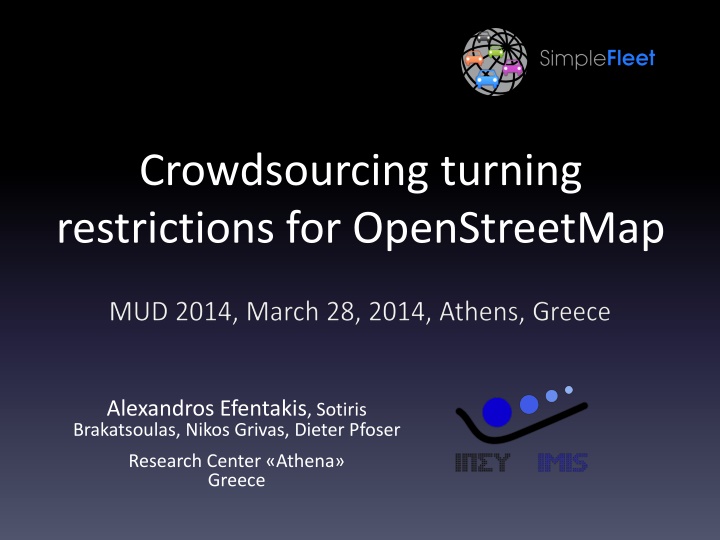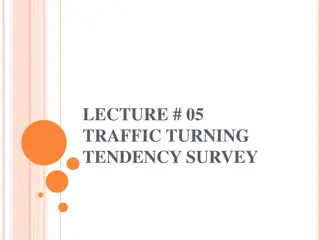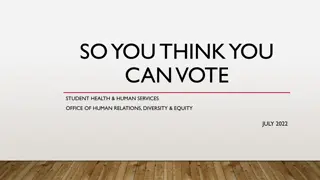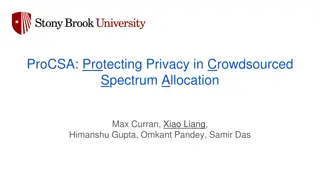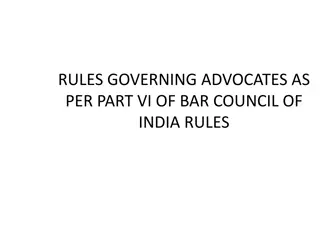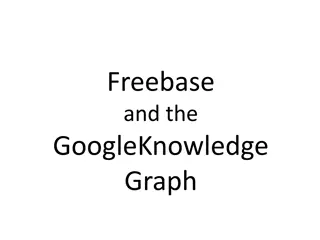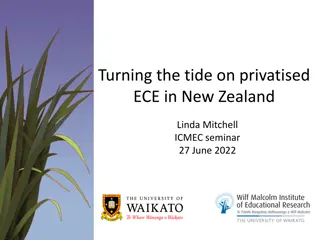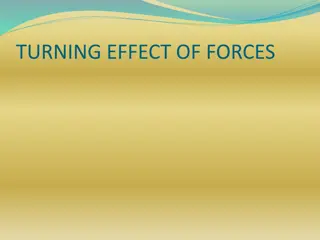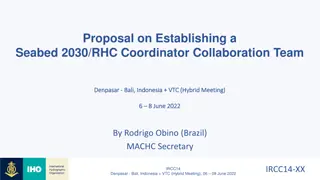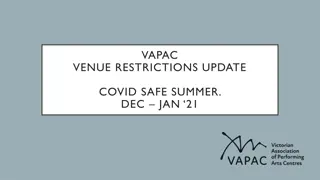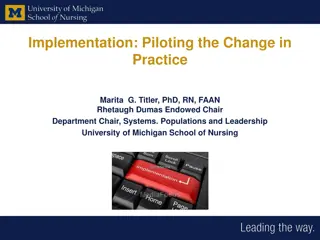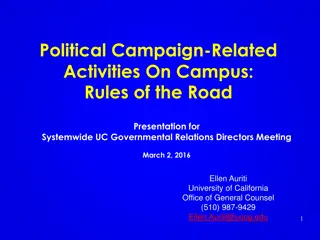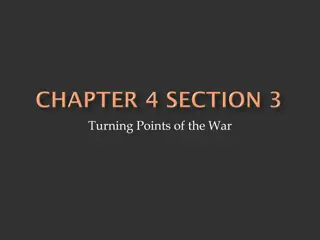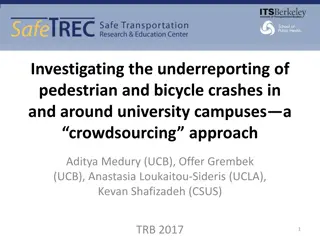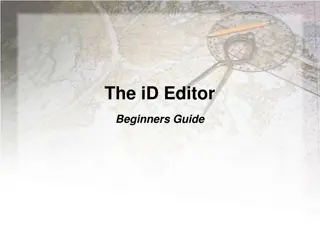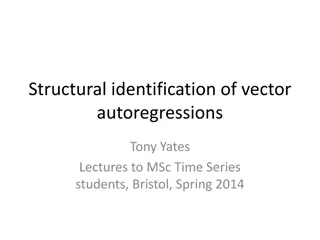Enhancing OpenStreetMap with Crowdsourced Turning Restrictions
Abundance of GPS tracking data has led to significant research on map-matching algorithms and identifying turning restrictions. This study focuses on inferring turning restrictions for OpenStreetMap data by utilizing historic map-matching results effectively. Understanding and implementing turning restrictions are critical for fleet management solutions, routing services, and isochrone services to avoid suboptimal routes and potential accidents caused by erroneous paths due to ignored turning restrictions at intersections. The research differentiates its approach from previous works by employing GPS trajectories, map-matching results, and data mining techniques to determine turning costs using publicly available datasets from European cities.
Download Presentation

Please find below an Image/Link to download the presentation.
The content on the website is provided AS IS for your information and personal use only. It may not be sold, licensed, or shared on other websites without obtaining consent from the author.If you encounter any issues during the download, it is possible that the publisher has removed the file from their server.
You are allowed to download the files provided on this website for personal or commercial use, subject to the condition that they are used lawfully. All files are the property of their respective owners.
The content on the website is provided AS IS for your information and personal use only. It may not be sold, licensed, or shared on other websites without obtaining consent from the author.
E N D
Presentation Transcript
Crowdsourcing turning restrictions for OpenStreetMap Alexandros Efentakis, Sotiris Brakatsoulas, Nikos Grivas, Dieter Pfoser Research Center Athena Greece
Introduction Abundance of GPS tracking data Significant research around: GPS trajectories Map-matching algorithms Identifying turning restrictions? In this research effort: Infer turning restrictions for OpenStreetMap data Utilizing historic map-matching results Straighforward & effective way
Importance of turning restrictions Critical for any fleet management solution Routing service Isochrone service Ignoring traffic: Suboptimal, yet valid route Ignoring turning restrictions: Erroneous paths May lead to accidents
Importance of turning restrictions Intersections are important components of urban road networks Contribute much to the total travel time cost Intersection delays contribute to 17-35% of the total travel time
Previous works Previous works on turn costs / intersection delays Generalization of turning restrictions (turn delays of ) Fundamentally different from our approach: Previous works Our approach To calculate turns costs many vehicles need to use the turns Identify restrictions by focusing on turns with no data Use GPS trajectories Use map-matching results Data-mining techniques: divide GPS datasets into training and test set Independent mapping service to verify findings Publicly available datasets: Simulated Focused on specific city Limited time periods Our dataset: Three European cities 2,000-5,000 vehicles per city 12-month period
OSM and turning restrictions (1/2) OpenStreetMap dataset: Crowdsourced High-quality Frequently updated BUT: limited information for turning restrictions Why? No public datasets for traffic signs Satellite imagery cannot help Adding a single restriction is time-consuming
OSM and turning restrictions (2/2) OSM contains a relation tag Relation:restriction Small number of OSM users contribute Worse for other European countries (e.g., in Montenegro) Contribution as of September 2013 city 2009 2010 2011 2012 2013 total Athens - 11 1 75 127 214 Berlin 8 26 101 386 147 668 Vienna 33 36 99 307 324 799
Map-matching FCD collection from vehicles is now mainstream GPS trajectories: Latitude + longitude + timestamp Imprecise Measurement errors: limited GPS accuracy Sampling error Map-matching (MM): Aligns GPS positions with the road network graph INPUT: GPS trajectories OUTPUT: Ordered sequence of road network graph edges
Using MM results In scientific literature: Significant work on processing FCD No work on processing MM results Despite being more condensed & less error-prone We have a large amount of historic MM data Take advantage of them to identify turning restrictions How? Turns allowed in the original data Most probably prohibited In practice, rarely, if ever, used
Input data GPS traces of fleet vehicles Athens, Berlin & Vienna 2,000 5,000 vehicles per city One data point every 60 180 sec GPS trajectories for each vehicle map-matched Eliminate MM edges of OSM category >10 12-15% of the MM records dropped One year of data October 2012 September 2013 Several GB of compressed historic MM results
Parsing MM results (1/2) Hundreds of thousands of nodes & edges Necessary to limit turns to examine Only pairs of edges that connect at intersection vertices Vertices order >2 Only intersection vertices connected to roads of OSM category 10 Final vertices < 25% of total vertices # intersection vertices for roads 10 # intersection vertices city # vertices # edges total % total % Athens 277,719 329,444 100,422 36 % 34,921 13 % Berlin 89,598 103,486 51,935 58 % 21,119 24 % Vienna 100,579 112,478 44,874 45 % 16,104 16 %
Parsing MM results (2/2) Parse compressed archives of historic MM results Count instances for each turn Sufficient number of measurements per intersection vertex # intersection vertices for roads 10 # instances per inters. vertex for roads 10 # examined turns # total instances city Athens 34,921 75,552 144,451,729 4,137 Berlin 22,119 44,636 2,054,969,090 97,304 Vienna 16,104 36,484 610,902,632 37,935
Determine frequency usage of turns Group turns by entrance edge and its direction Each group: All turns a vehicle can follow after traversing a specific edge in a specific direction We know number of instances of each turn in group We calculate percentage of usage for each one
Identify candidate restrictions Turns with low usage percentage probably prohibited Probably erroneous map-matching results OSM lacks this information Threshold of 5% Tweakable Yet, pretty accurate # candidate restrictions candidate restrictions % city # turns 5 % 2.5 % 5 % 2.5 % Athens 75,552 5,287 3,596 7.00 % 4.76 % Berlin 44,636 2,653 1,582 5.94 % 3.54 % Vienna 36,484 1,739 1,261 4.77 % 3.46 %
Direction of restrictions Conclude if a restriction is about a: Straight Left Right U-turn Easy, as we already have the inclination of edges Most of the candidate restrictions represent left-turns #turning restrictions city straight left right U-turn Athens 5,287 6.5 % 45.4 % 41.6 % 6.5 % Berlin 2,653 1.6 % 64.6 % 18.6 % 15.2 % Vienna 1,739 10.5 % 44.8 % 30.0 % 14.7 %
Verify candidate restrictions Visualize candidate restrictions Use an external mapping service Cross-check if results are similar to ours
Visual inspection QGIS Appropriate traffic sign on intersections of restrictions Google Map layer in the background Compare results to an external mapping service We visually verified many of the candidate restrictions
Sourcing external mapping service We need to verify & quantify our findings Through an automatic process Google Directions API Not guaranteed to be perfect Yet, popular & commercial alternative to OSM Only allows 2,500 requests per 24h from an IP Important to identify a limited number of candidate restrictions
Verification method http://maps.googleapis.com/maps/api/directions/json? origin={A_coordinates} &destination={C_coordinates} &waypoints=via:{B_coordinates} &sensor=false Request returns JSON object We extract the length of Google s {A C via B} path We have the lengths of edges (A,B), (B,C) If Google s path length >> sum of edges lengths Route is much longer than (A,B) (B,C) Turning restriction is verified
Verified restrictions The majority of candidate restrictions were verified Usually, Google s paths 85-90% larger than sum of edges lengths Athens & Vienna: 67% verified Berlin: 57% verified Respectable amount of restrictions in interval 2.5% - 5% city # candidate turning restrictions # verified verified (%) 5 % 2.5 % 5 % 2.5 % 5 % 2.5 % Athens 5,287 3,596 3,517 2,471 67 % 69 % Berlin 2,653 1,582 1,510 1,016 57 % 64 % Vienna 1,739 1,261 1,172 880 67 % 70 %
Results overview Only a few thousand candidate restrictions to verify Instead of examining hundreds of thousands of turns By focusing on intersection nodes connecting major roads Utilizing historic map-matching results The majority of them verified through Google Directions API Verified restrictions >> restrictions in OSM datasets examined turns candidate restrictions verified restrictions OSM city total turns restrictions Athens 900,397 75,552 5,287 3,517 214 Berlin 252,271 44,636 2,653 1,510 668 Vienna 256,185 36,484 1,739 1,172 799
Non-verified restrictions Google s path length similar to sum of edges lengths In some cases, less than 80 % Inconsistencies between the two maps Even if turns are not really restricted They are rarely used Should still be penalized in shortest-path app Unappealing turns
Conclusion New way to infer turning restrictions for OSM data Efficient Semi-automatic Utilizing historic map-matching data 57-67% of restrictions extracted were verified Using an external mapping service 2-16 times more restrictions than the existing in OSM First to use map-matching results for such a task
Future work Automatically contribute confirmed restrictions back to OSM project Improve quality of map-matching algorithms Map-matching uses partial SP calculations Until now, turning restrictions not taken into account New restrictions integrated back in the map-matching algorithm Self-improving, evolutionary map-matching algorithm!
